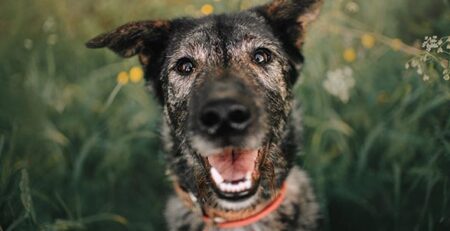Table of Contents
Exertional collapse in the dog: the EIC syndrome
Exertional collapse in dogs or EIC syndrome is a little-known but very dangerous disease condition that can even prove fatal if not recognized and treated immediately.
It is manifested by sudden failure accompanied by weakness and loss of coordination of the dog’s hind legs after he has been exercising intensely, especially during days of intense heat.
Exercise-induced collapse in dogs can vary in duration from a few minutes to an hour.
Symptoms can appear unexpectedly at any age and in apparently healthy dogs.
The Causes of EIC Syndrome – Exercise Induced Collapse
The disease was identified recently, in 1993 to be exact.
Studies conducted by researchers have ascertained that its origin is hereditary and consists of a genetic mutation in the dog’s central nervous system.
In 2008, the Veterinary Diagnostic Laboratory University of Minnesota (USA) identified the gene responsible for the disorder(DNM1-Gene).
It is a recessive and nondominant trait, that is, although inherited by the offspring, the presence of the mutated gene in the dog’s genetic make-up does not necessarily result in the onset of the syndrome: in fact, it is possible for the four-legged animal to never manifest the condition.
The mutated gene and the excess function of catecholamines
When the dog undergoes intense exercise, body temperature rises and the body produces excess catecholamines precisely because of the mutated gene.
Catecholamines (i.e., adrenaline, norepinephrine, and dopamine) are very important in regulating many functions of the body: from controlling blood pressure, to maintaining salt water balance, to controlling heart rate, to the body’s reaction in stress.
Excess catecholamines damage nerve cells, causing weakness and hind limb paralysis to actual collapse or syncope.
Symptoms of syncope
Exertion-induced collapse in dogs typically manifests itself within 5 to 15 minutes after the start of exercise through some truly troubling symptoms:
The dog shows difficulty standing or walking or has a wobbly gait, loses ‘balance and coordination.
And again, he appears lethargic and gasps for breath.
Most dogs recover soon, others unfortunately go so far as to collapse, losing consciousness.
Seeing one’s dog in the throes of an episode of stress-induced collapse is of great concern to his humans.
However, recognizing early signs and acting quickly without panicking can make all the difference all the more so if your four-legged animal belongs to an at-risk breed.
If your dog exhibits any of these symptoms after intense exercise, you should take him to the vet immediately.
Dog syncope: the breeds at risk
This condition is more common in certain breeds of dogs, including:
- Labrador Retriever
- Border collie
- Pincher
- Argentine dogo
- Golden Retriever
- German Shepherd
There is a DNA test that can ascertain whether your dog is at risk of developing the syndrome.
DNA testing for the diagnosis of EIC
The analysis conducted on your dog’s DNA will return one of three possible results:
- CLEAR/Healthy: The dog has inherited 2 good genes free of defects or mutations.
- CARRIER/CARRIER: The dog has inherited 1 normal copy of the gene and 1 mutated copy.
This means that the animal has a 50% chance of passing the condition on to offspring. - AT RISK/Affect: The dog has inherited 2 copies of the mutated gene and is at risk of experiencing the life-threatening impacts of EIC.
Diagnosis and treatment
Diagnosis of this syndrome requires extensive tests including blood tests but also heart tests.
Having ascertained that the cause of collapse in the dog gives EIC, the veterinarian prescribes the appropriate treatment.
In some cases, hospitalization may be necessary.
Following this, it is necessary to monitor the dog to ensure that it recovers appropriately.
How to prevent stress-induced collapse in dogs
It is possible for dogs affected by EIC syndrome to live a healthy existence by first trying to avoid exercise to prevent episodes of collapse and implementing certain precautions:
- Hydrate the dog before, during and after the scheduled activity
- Let him rest between activities
- Avoid any activity in hot or humid conditions
If your dog belongs to an at-risk breed, contact the Veterinary Doctors on our staff to have him or her checked out and get the advice you need to reduce and manage the triggers that could contribute to the onset of collapse.
We would also like to remind you that Clinica La Veterinaria is always open h24 every day including holidays and with First Aid service from 8 pm to 8 am.











